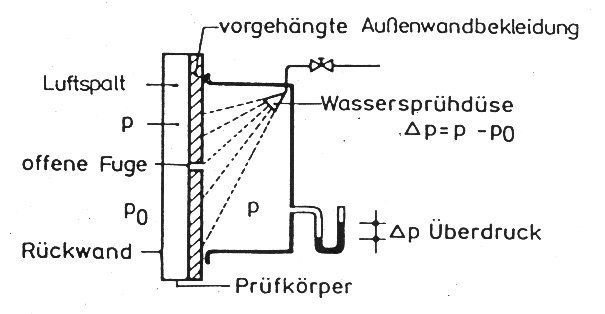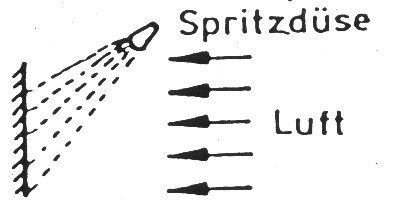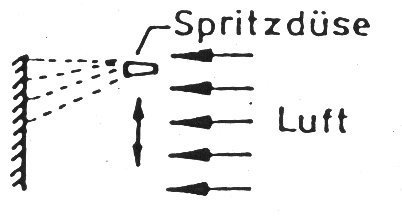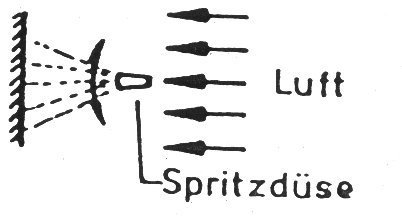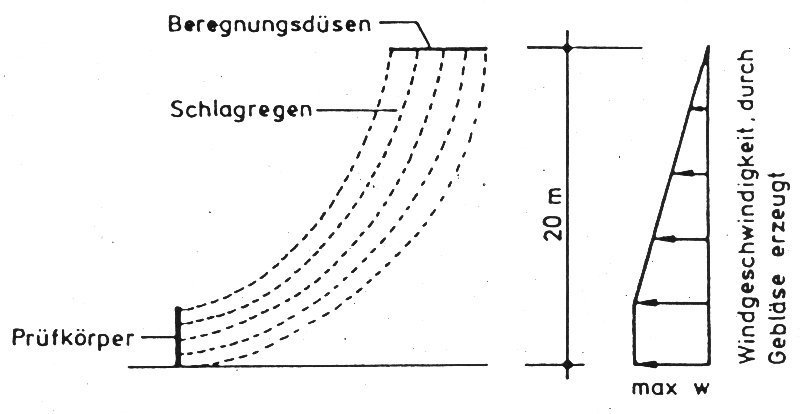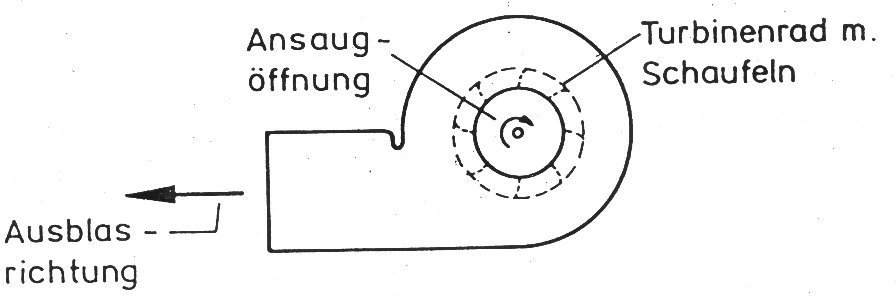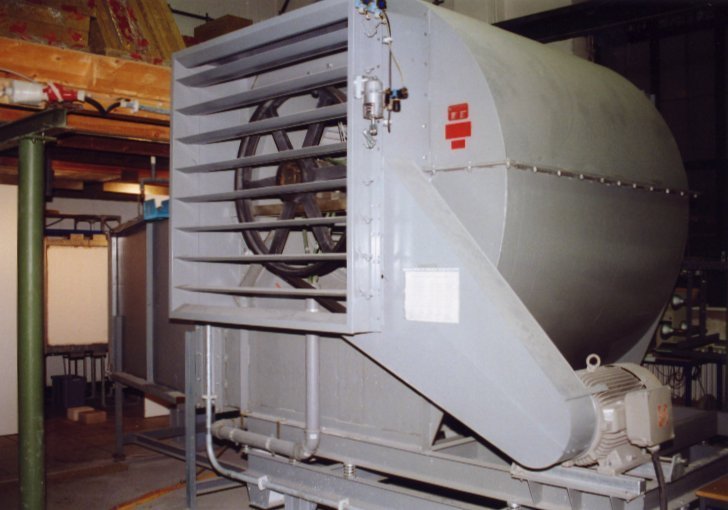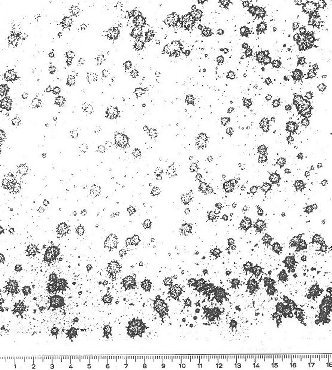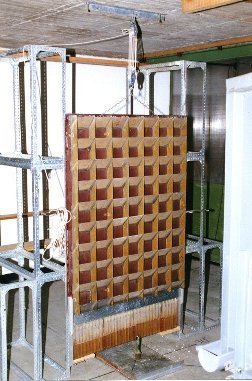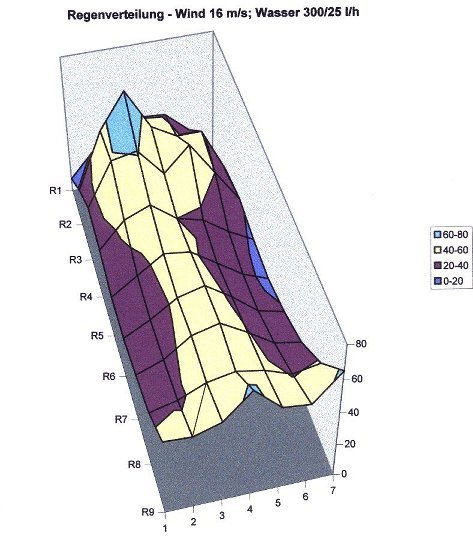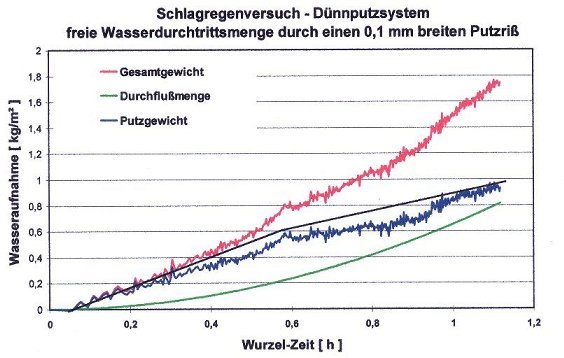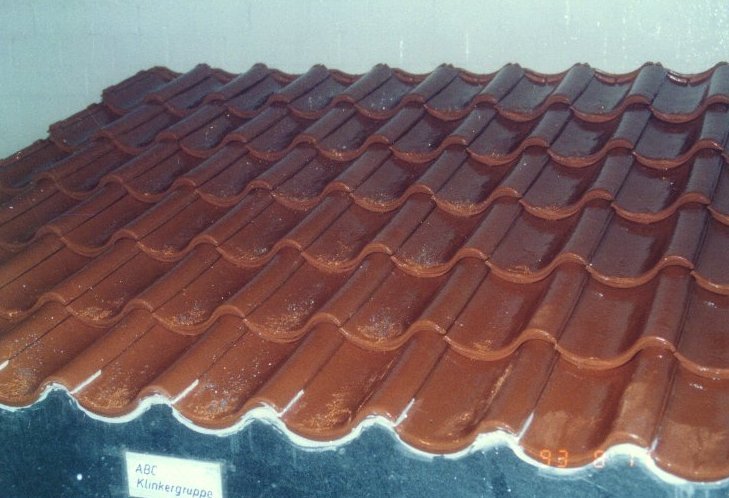Artificial driving rain/künstlicher Schlagregen (Dipl.-Ing. O. Fechner)
Principles of producing driving rain
Static methods
This method is specially suitable for testing windows on tightness against driving rain (Bild 1).
- amount of water is defined
- the way of spraying on specimen is not defineable
- this method does not produce a natural spectrum of the raindrops
- the pressure before and behind the specimen is equal
Dynamic methods
- realistic simulation of the pressure before and behind the specimen
- the water distribution depends on the construction of the nozzles
Construction of the nozzles
fixed nozzles
The water stream is mostly directed parallel to the airstream in direction of the specimen. By changing the water pressure it is attempted to equalize the velocity of water to the velocity of air (Bild 2).
- the velocity of the drops depends an the amount of water added
- the spectrum of the drops is composed of a disturbed water stream
- the distribution of water in the air is not uniform due to the unchanged direction of the spray of nozzles
movable nozzles
The testing area is covered in sections, so that partial areas are temporary strongly rained. The time dependent raining cannot be considered as a simulation of natural rain (Bild 3).
swingable nozzles
Swingable nozzles cover from a fixed point the whole testing area. This type of raining is therefore also time dependent. Furthermore, the outcomming water stream is different deflected in dependence of the air velocity. Also the raining using swingable nozzles cannot be considered as a simulation of natural rain (Bild 4).
Description of rain
- Spectrum of the raindrops
- Acceleration and speed of the raindrops
- Distribution of the water
A normal falling rain is described by the spectrum of rain drops and the velocity of the drops in the air. A free falling water drop reaches the maximum speed of fall after covering a certain distance. A maximum 5 mm sized raindrop, which falls with a speed of 8 m/s reaches 98% of the maximum speed after a falldistance of:
s98 = (2,93 · vs²) ÷ g [ taken from Eick, Theoretical fluid dynamics ]
s98 = falldistance by 98% of the maximum speed
vs = maximum drop speed
g = acceleration due to gravity
Ideal experimental setup
s98 = (2,93 · 8,0²) ÷ g
s98 = 19,1 [m]
To produce a normal rain in the same way as in nature, it is necessary that the drops fall from a height of round 20 meters. To produce a driving rain the raindrops are to be accelerated horizontally on the whole fallway.
first solution
In normal conditions such an experimental setup is too large for practical tests (Bild 5).
second solution
Characteristic of driving rain is, that the airstream and the waterdrops have the same velocity. That is the reason why the raindrops need to be accelerated before they come into the airstream. Slower raindrops would be desturbed by the wind. These are the results of many trials to accelerate the raindrops in other ways (Bild 6).
In the german setup the waterdrops get the acceleration from an axial driven fan. The drops get a centrifugal force when they reach the blowout port. The raindrops are suspended in the air.
Experimental setup - TU Berlin
(Bild 7 und Bild 8)
Comparision measuring
- spectrum of artificial rain (Bild 9)
- spectrum of natural rain (Bild 10)
Distribution of water in the testing area
- test apparatus (Bild 11)
- sample for the test results (Bild 12)
Research - samples
- cladding for external walls, ventilated at rear water penetration in open joints (Bild 13)
- external thermal insulation, cracks in the rendering (Bild 14)
- roof tiles (Bild 15 und Bild 16)
